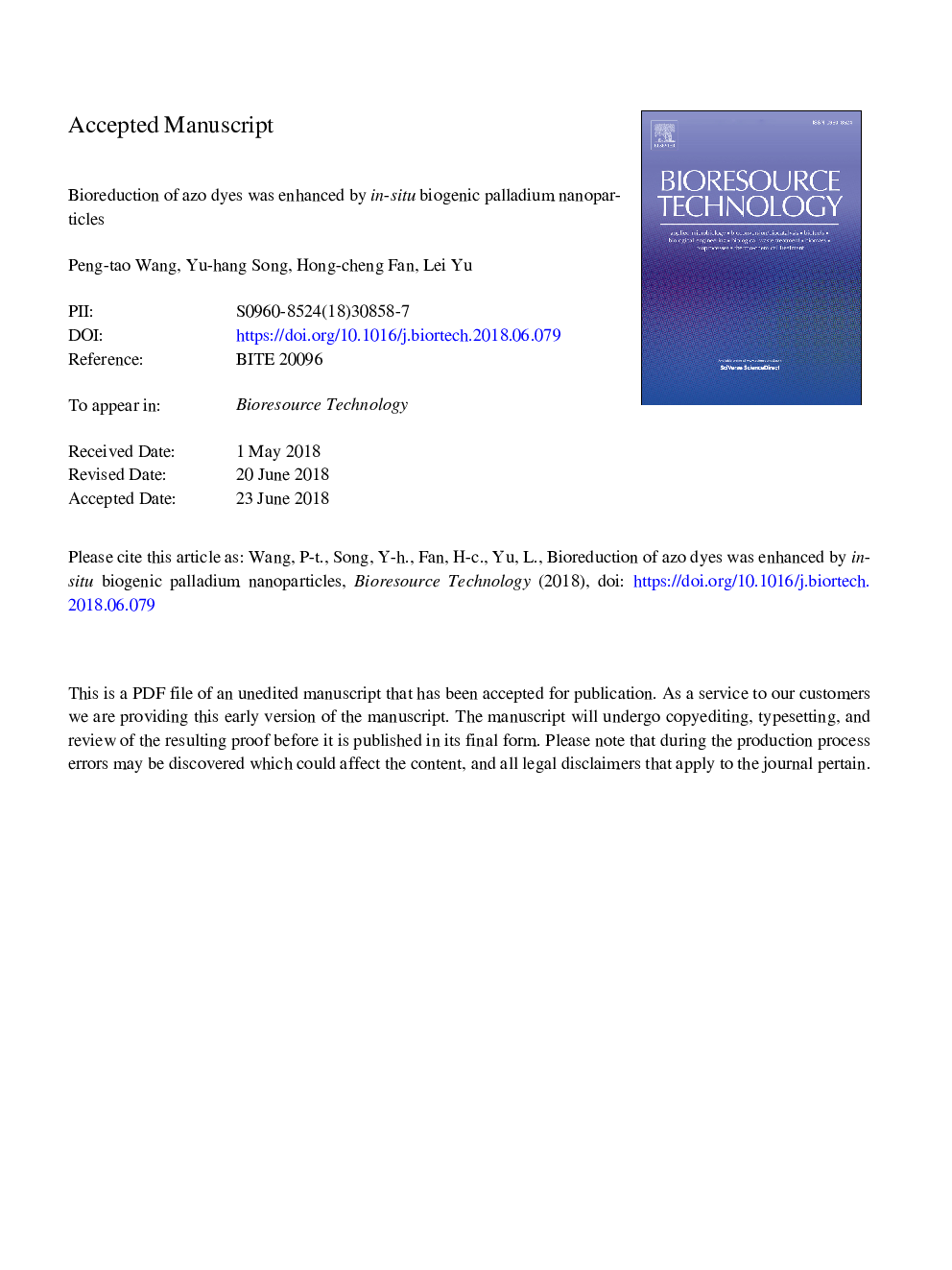| Article ID | Journal | Published Year | Pages | File Type |
|---|---|---|---|---|
| 7065902 | Bioresource Technology | 2018 | 27 Pages |
Abstract
Biogenic nanoparticles are promising materials for their green synthesis method and good performance in stimulation on reduction of environmental contaminants. In this study, Pd(0) nanoparticles (bio-Pd) were generated by Klebsiella oxytoca GS-4-08 in fermentative condition and in-situ improved the azo dye reduction. The bio-Pd was mainly located on cell membrane with a size range of 5-20â¯nm by TEM and XRD data analyses. Anthraquinone-2-disulfonate (AQS) greatly increased the reduction rate of Pd(II) with a reduction efficiency as high as 96.54â¯Â±â¯0.23% in 24â¯h. The quinone respiration theory, glucose metabolism and the biohydrogen pathway were used to explain the enhancement mechanism of the in-situ generated bio-Pd on azo dye reduction. These results indicate that the in-situ generated bio-Pd by K. oxytoca strain is efficient for azo dye reduction without complex preparation processes, which is of great significance for the removal and subsequent safe disposal of hazardous environmental compounds.
Related Topics
Physical Sciences and Engineering
Chemical Engineering
Process Chemistry and Technology
Authors
Peng-tao Wang, Yu-hang Song, Hong-cheng Fan, Lei Yu,
